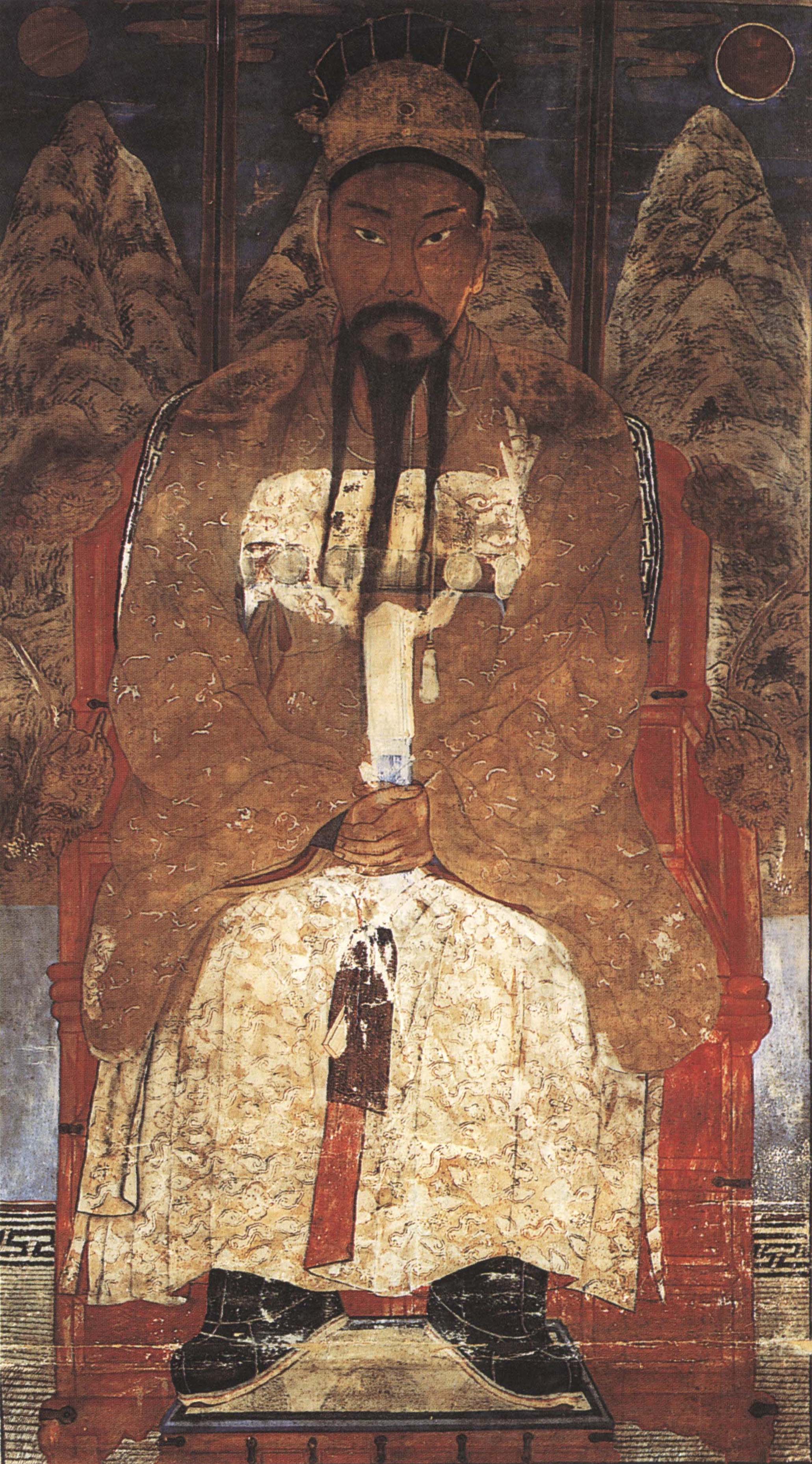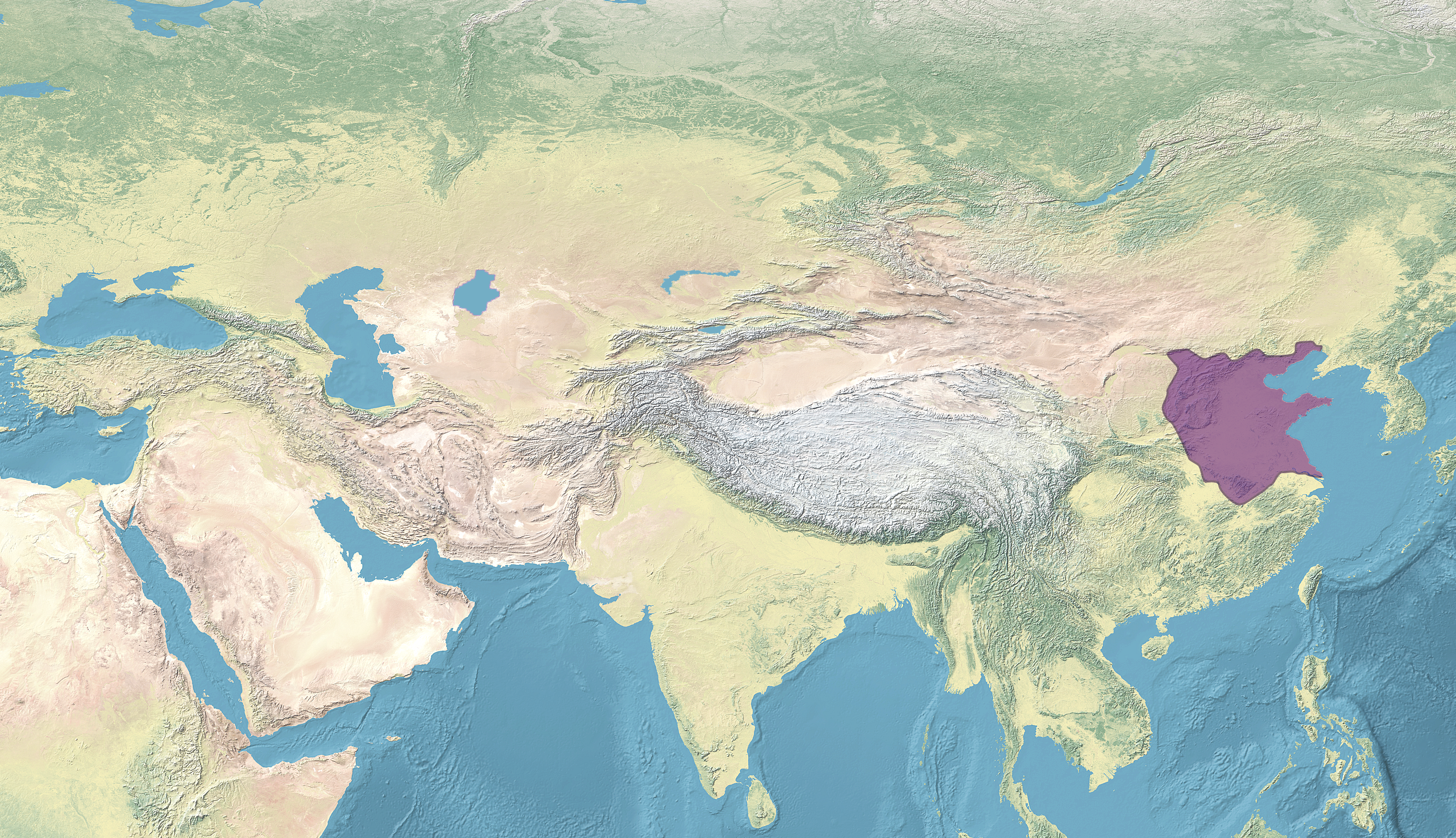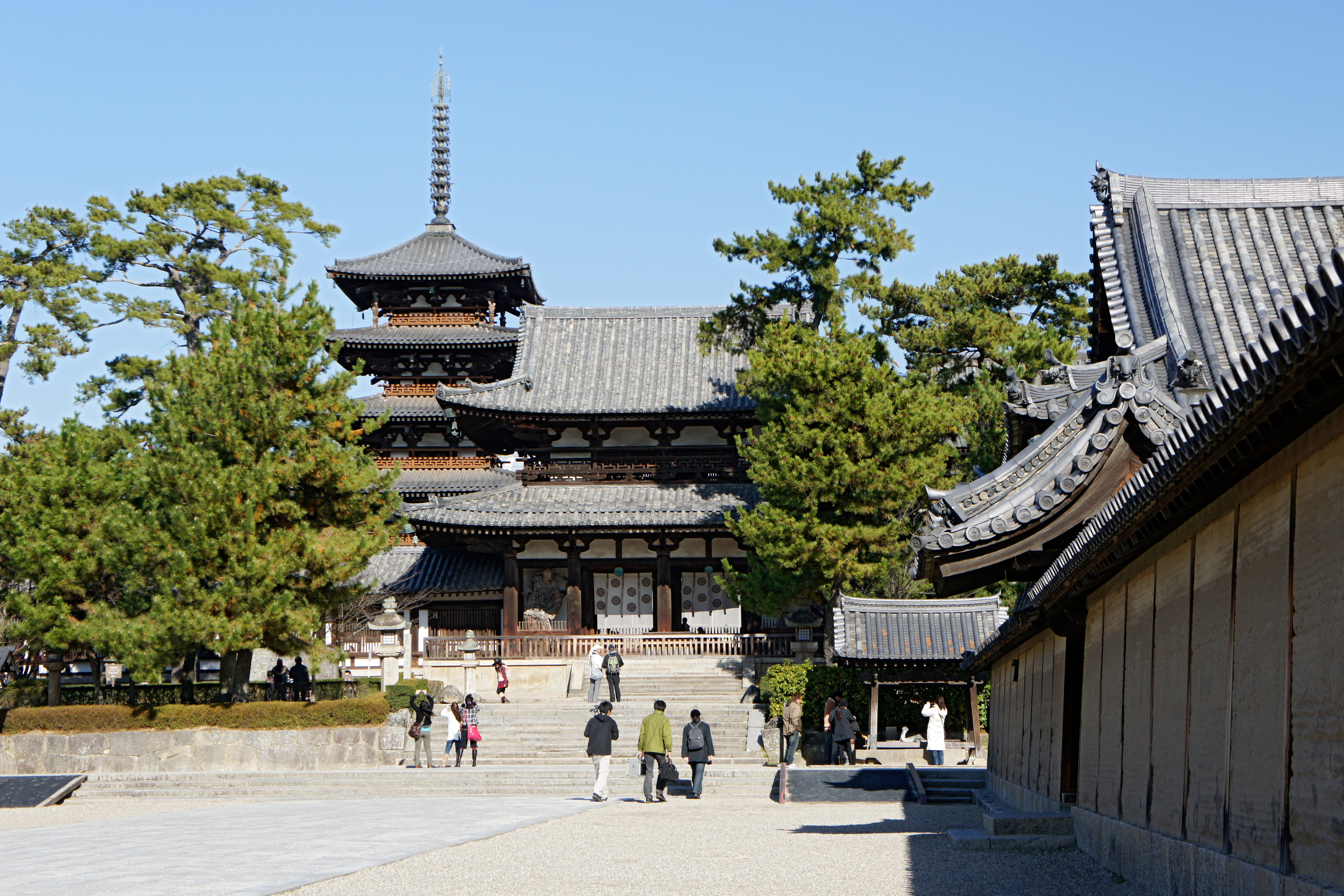|
Chumo Of Goguryeo
Dongmyeong of Goguryeo (), personal name Ko Chumong (), was the founding monarch of the kingdom of Goguryeo, and was worshipped as a god-king by the people of Goguryeo and Goryeo. King Dongmyeong was also an important figure for the kingdom of Baekje, as the father of its founding monarch, King Onjo. Names Chumong, originally Buyeo slang for an excellent archer, was his personal name. He was commonly recorded as Chumong () by various Chinese sources, including history books written by Northern Qi and Tang. This name became dominant in future writings including the ''Samguk sagi'' and the ''Samguk yusa''. At some point in time prior to the compilation of the ''Samguk sagi'' (1145), he was given the posthumous name of Dongmyeong (), literally translating to ''the Brilliant Saintly King of the East''. In the earliest Goguryeo sources, such as the Gwanggaeto Stele and Tomb Epitaph of Moduru, refer to Dongmyeong by his personal name, Ch'umo (). Moduru's epitaph refers to Dongmye ... [...More Info...] [...Related Items...] OR: [Wikipedia] [Google] [Baidu] |
List Of Monarchs Of Korea
This is a list of monarchs of Korea, arranged by dynasty. Names are romanized according to the South Korean Revised Romanization of Korean. McCune–Reischauer romanizations may be found at the articles about the individual monarchs. Gojoseon Gojoseon (2333 BC – 108 BC) was the first Korean kingdom. According to legend, it was founded by Dangun in 2333 BC. Bronze Age archaeological evidence of Gojoseon culture is found in northern Korea and Liaoning. By the 9th to 4th century BC, various historical and archaeological evidence shows Gojoseon was a flourishing state and a self-declared kingdom. Both Dangun and Gija are believed to be mythological figures, but recent findings suggest and theorize that since Gojoseon was a kingdom with artifacts dating back to the 4th millennium BC, Dangun and Gija may have been royal or imperial titles used for the monarchs of Gojoseon, hence the use of Dangun for 1900 years. * : "An extreme manifestation of nationalism and the family cult was ... [...More Info...] [...Related Items...] OR: [Wikipedia] [Google] [Baidu] |
Northern Qi
Qi, known as the Northern Qi (), Later Qi (後齊) or Gao Qi (高齊) in historiography, was a Dynasties in Chinese history, Chinese imperial dynasty and one of the Northern and Southern dynasties#Northern dynasties, Northern dynasties during the Northern and Southern dynasties era. It ruled the eastern part of northern China from 550 to 577. The dynasty was founded by Emperor Wenxuan of Northern Qi, Gao Yang (Emperor Wenxuan), and was eventually conquered by the Xianbei-led Northern Zhou, Northern Zhou dynasty in 577. History Northern Qi was the successor state of the Chinese Xianbei state of Eastern Wei and was founded by Emperor Wenxuan of Northern Qi, Emperor Wenxuan. Emperor Wenxuan had a Han Chinese, Han father of largely Xianbei culture, Gao Huan, and a Xianbei mother, Lou Zhaojun. As Eastern Wei's powerful minister Gao Huan was succeeded by his sons Gao Cheng and Gao Yang, who took the throne from Emperor Xiaojing of Eastern Wei in 550 and established Northern Qi as Emper ... [...More Info...] [...Related Items...] OR: [Wikipedia] [Google] [Baidu] |
Buru Of Buyeo
Hae Buru (; 86 – 48 BCE) was king of Bukbuyeo and founder of Dongbuyeo (86 BCE – 22 CE), an ancient Korean kingdom. Hae Buru took the throne and became the king of Bukbuyeo. Hae Buru led his followers and some of Bukbuyeo people to the city of Gaseopwon, a city near the Sea of Japan (East Korean Sea). In that same year, Hae Buru founded another Buyeo, which he named Dongbuyeo, due to its position east of Bukbuyeo. According to the ''Samguk yusa'', Il-yeon: ''Samguk Yusa: Legends and History of the Three Kingdoms of Ancient Korea'', translated by Tae-Hung Ha and Grafton K. Mintz. Book One, page 29. Silk Pagoda (2006). Aranbul, a minister of the Buyeo court, had a dream in which the Heavenly Emperor told him that Buyeo was to make way for the descendants of Heaven, and believing that the dream was a sort of omen, he advised his king Buru to move the capital. Buru later moved his capital to (迦葉原), and named his country Dongbuyeo. Hae Buru's wives apparently were not ... [...More Info...] [...Related Items...] OR: [Wikipedia] [Google] [Baidu] |
Dongguk Yi Sangguk Jip
''Dongguk Yi Sangguk jip'' () or the ''Collected Works of Minister Yi of Korea'' is a Korean compilation book written in 1241 by Goryeo scholar Yi Kyu-bo Yi Kyu-bo (; 1168–1241) was a Korean literary critic and poet of the Koryo period. Approximately 1,500-2,000 of his poems and numerous prose works survive. The 13th century ''Collected Works of Minister Yi of Korea'' by Yi Kyu-bo is one of th .... It is one of the books that mentions the founding myth of Goguryeo. History The book consists of 53 volumes, and was woodblock printed. Ham(涵), the son of Yi Kyu-bo, edited and published the first 41 books and the last 12 books were published in December in the same year. In 1251, yik-bae(益培), grandson of Yi Kyu-bo, corrected and complemented the content by the order of then king of goryeo in an institute called bunsadaejangdogam(分司大藏都監). The book was edited several times in the Joseon dynasty, but judging from the words of Joseon scholar Yi Ik, some of the los ... [...More Info...] [...Related Items...] OR: [Wikipedia] [Google] [Baidu] |
Papers On Far Eastern History
''East Asian History'' is a biannual peer-reviewed open-access academic journal published by the Australian National University. It was established in 1970 as ''Papers on Far Eastern History'', obtaining its current title in 1991. Published by ANU's Research School of Pacific and Asian Studies, it was part of a growth in publication on Asian studies in Australia in the 1970s. Originally "founded as a forum for the publication of papers written by the faculty and students of Australian National University" affiliates of ANU continued to "represent the large majority of its contributors, although over the years there have been increasing contributions from scholars from other universities in Australia and abroad." Chinese History: A Manual included the journal as one of the main Western-language journals for research on Chinese history. In its early years, it represented one of only a few places for work on East Asian history to be published in Australia. Igor de Rachewiltz's transla ... [...More Info...] [...Related Items...] OR: [Wikipedia] [Google] [Baidu] |
Origin Myth
An origin myth is a type of myth that explains the beginnings of a natural or social aspect of the world. Creation myths are a type of origin myth narrating the formation of the universe. However, numerous cultures have stories that take place after the initial origin. These stories aim to explain the origins of natural phenomena or human institutions within an already existing world. In Greco-Roman scholarship, the terms founding myth or etiological myth (from 'cause') are occasionally used to describe a myth that clarifies an origin, particularly how an object or custom came into existence. In modern political discourse the terms "founding myth", "foundational myth", etc. are often used as critical references to official or widely accepted narratives about the origins or early history of a nation, a society, a culture, etc. Nature of origin myths Origin myths are narratives that explain how a particular reality came into existence.Eliade 1963, p. 21 They often serve to ... [...More Info...] [...Related Items...] OR: [Wikipedia] [Google] [Baidu] |
Ko (Korean Surname)
Ko (), also variously romanized Go, Goh, or Koh, is a common Korean surname. Among Koreans with this surname, the largest clan is the , named for its ''bon-gwan'' (clan hometown) of Jeju Island; they claim descent from , the first ruler of the kingdom of Tamna, which ruled Jeju until being absorbed by the Joseon dynasty. Origin According to the ''Samguk Sagi'', the Goguryeo royal family claimed descent from the mythical god Gao Yang, who was the grandson of the Yellow Emperor of Chinese mythology, and thus took the surname of "Go" (高); however, this legend was discredited in the commentaries () by Kim Busik, the compiler of the ''Samguk Sagi'', who concluded that both Baekje and Goguryeo originated from Buyeo. Liaoyang (Hanja: 遼陽) based Go (Hanja: 高) family is The Royal of Goguryeo, Northern Yan ruler Gao Yun (Hanja: 高雲), Tang dynasty general Gao Xianzhi (Hanja: 高仙芝) has Goguryeo origin. In South Korea, Hoengseong Go clan is also descended from the Royal d ... [...More Info...] [...Related Items...] OR: [Wikipedia] [Google] [Baidu] |
Heian Period
The is the last division of classical Japanese history, running from 794 to 1185. It followed the Nara period, beginning when the 50th emperor, Emperor Kammu, moved the capital of Japan to Heian-kyō (modern Kyoto). means in Japanese. It is a period in Japanese history when the Chinese influence on Japanese culture, Chinese influences were in decline and the national culture matured. The Heian period is also considered the peak of the Japanese Emperors of Japan, imperial court, noted for its Japanese art, art, especially Japanese poetry, poetry and Japanese literature, literature. Two syllabaries unique to Japan, katakana and hiragana, emerged during this time. This gave rise to Japan's famous vernacular literature, with many of its texts written by court ladies who were not as educated in Chinese as their male counterparts. Although the Imperial House of Japan had power on the surface, the real power was in the hands of the Fujiwara clan, a powerful Kuge, aristocratic family wh ... [...More Info...] [...Related Items...] OR: [Wikipedia] [Google] [Baidu] |
Nara Prefecture
is a Prefectures of Japan, prefecture of Japan located in the Kansai region of Honshu. Nara Prefecture has a population of 1,321,805 and has a geographic area of . Nara Prefecture borders Kyoto Prefecture to the north, Osaka Prefecture to the northwest, Wakayama Prefecture to the southwest, and Mie Prefecture to the east. Nara (city), Nara is the capital and largest city of Nara Prefecture, with other major cities including Kashihara, Nara, Kashihara, Ikoma, Nara, Ikoma, and Yamatokōriyama. Nara Prefecture is located in the center of the Kii Peninsula on Japan's Pacific Ocean coast, and is one of only eight landlocked prefectures. Nara Prefecture has the distinction of having more UNESCO World Heritage listings than any other prefecture in Japan. History The Nara Prefecture region is considered one of the oldest regions in Japan, having been in existence for thousands of years, and is widely viewed as the Japanese cradle of civilization. Like Kyoto, Nara was one of Imperial ... [...More Info...] [...Related Items...] OR: [Wikipedia] [Google] [Baidu] |
Silla
Silla (; Old Korean: wikt:徐羅伐#Old Korean, 徐羅伐, Yale romanization of Korean, Yale: Syerapel, Revised Romanization of Korean, RR: ''Seorabeol''; International Phonetic Alphabet, IPA: ) was a Korean kingdom that existed between 57 BCE – 935 CE and was located on the southern and central parts of the Korea, Korean Peninsula. Silla, along with Paekje and Koguryeo, formed the Three Kingdoms of Korea. Silla had the lowest population of the three, approximately 850,000 people (170,000 households), significantly smaller than those of Paekje (3,800,000 people) and Koguryeo (3,500,000 people). Its foundation can be traced back to the semi-mythological figure of Hyeokgeose of Silla (Old Korean: *pulkunae, "light of the world"), of the Park (Korean surname), Park clan. The country was first ruled intermittently by the Miryang Park clan for 232 years and the Seok (Korean surname)#Wolseong, Wolseong Seok clan for 172 years and beginning with the reign of Michu of Silla, Mi ... [...More Info...] [...Related Items...] OR: [Wikipedia] [Google] [Baidu] |
Gwanggaeto Stele
The Gwanggaeto Stele is a memorial stele for the tomb of Gwanggaeto the Great of Goguryeo, erected in 414 by his son Jangsu. This monument to Gwanggaeto the Great is the largest engraved stele in the world. It stands near the tomb of Gwanggaeto in the present-day city of Ji'an along the Yalu River in Jilin Province, Northeast China, which was the capital of Goguryeo at that time. It is carved out of a single mass of granite, stands approximately 6.39m tall and has a girth of almost four meters. The inscription is written exclusively in Classical Chinese. The stele is one of the major primary sources for the history of Goguryeo, and supplies invaluable historical detail on Gwanggaeto's reign as well as insights into Goguryeo mythology. It has also become a focal point of national rivalries in East Asia manifested in the interpretations of the stele's inscription and the place of Goguryeo in modern historical narratives. An exact replica of the Gwanggaeto Stele stands on the gr ... [...More Info...] [...Related Items...] OR: [Wikipedia] [Google] [Baidu] |
Posthumous Name
A posthumous name is an honorary Personal name, name given mainly to revered dead people in East Asian cultural sphere, East Asian culture. It is predominantly used in Asian countries such as China, Korea, Vietnam, Japan, Malaysia and Thailand. Reflecting on the person's accomplishments or reputation, the title is assigned after death and essentially replaces the name used during life. Although most posthumous names are given to royalty, some posthumous names are given to honour significant people without hereditary titles, such as courtiers or General officer, military generals. To create a posthumous name, one or more adjectives are inserted before the deceased's title. The name of the state or domain of the owner may be added to avoid ambiguity. History Origins Early mythological rulers such as Emperor Yao were known to have posthumous names. Archaeology, Archaeological discoveries have shown that the titles of kings as far back as the Zhou dynasty (1046 to 256 BC) are po ... [...More Info...] [...Related Items...] OR: [Wikipedia] [Google] [Baidu] |





